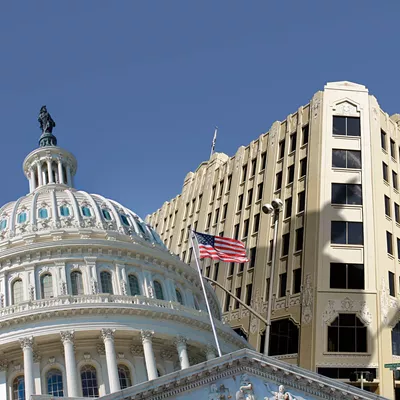It takes a certain technique — taught or learned — to pop your ears during a pressure change. You swallow, you yawn, you chew, you pull on your lobes.
But sometimes it doesn’t work. Sometimes no matter which technique you use, you can’t get that pop to happen. The buildup becomes annoying, maddening, then painful. With an ear infection, it can be excruciating.
For kids, such a situation is common. Their Eustachian tube, the part of the ear that’s meant to relieve pressure to the middle ear when they yawn or swallow, has malfunctioned. Maybe they have a cold. Maybe a flight left their ears with a pressure difference. But whatever the cause, the tube won’t open, and the ear remains pressurized. The result can be anything from pain, to fluid buildup, to a middle ear infection. Such an infection can cause them to lose their hearing temporarily.
Enter the EarPopper: A device resembling a can of nasal spray that — with a single swallow — can relieve ear pressure. Eventually, with regular use, it can drain the fluid that’s built up in the inner ear, restoring hearing.
“It’s one of those products that has a ‘wow factor’ to it,” says Kevin Connelly, vice-president of Summit Medical, which sells the EarPopper. “Nobody thinks it’s going to work that quick or that effectively.”
But, surprisingly, the EarPopper doesn’t go in the ear. It goes in the nose. Stick it up the nose, press the button and swallow.
“What this device does is blows a regulated amount of air up the nose,” Connelly says. “Swallowing takes about a millisecond. Soon as you’re done swallowing, it’s over. Suddenly you can hear again.”
Previously the solution to these ear problems was surgery: Ear doctors would place a hole through the eardrum to relieve the pressure and clear the fluid. Then, explains Michael Olds, a doctor at the Spokane Ear, Nose and Throat, a tube would be surgically implanted in the middle ear.
Surgery can be expensive, and though it’s a very minor and very common surgery, it carries the inherent risks of any surgery.
“The big concern is that the hole could fail to heal,” Olds says. “You can have hearing issues — and difficulty if water gets in the ear.”
But with the EarPopper, some of Olds’ patients are able to avoid surgery. When Olds prescribes the EarPopper to a patient, it serves two roles. The first is immediate. A five-second blast of air through the nose immediately equalizes the pressure in the ear.
“If you’re somebody who can plug your nose and blow and get your ears to pop, it’s a similar situation,” Olds says. “[The EarPopper] is able to generate a positive pressure while you’re swallowing.”
That’s where the “pop” comes from.
The second purpose is to allow fluid to drain out, and eventually, restore normal function to the Eustachian tube, which requires using the device twice a day for seven to 11 weeks. It doesn’t necessarily work 100 percent of the time, but Connelly says multiple studies indicate it’s far more than a placebo.
“After seven weeks of treatment, 75 percent of the children’s hearing had restored to normal,” Connelly says. Only 25 percent of those in the control group had their ear problems resolve spontaneously. Connelly says Summit sells two versions of the EarPopper: One for the doctor’s office, and one for home use. Without insurance, the device costs $200.
The EarPopper device can also help relieve ear pressure problems for frequent air travelers.
“It’s another tool in our box to be able to find ways [to repair middle ear issues] that are less invasive and less risky,” Olds says.





















